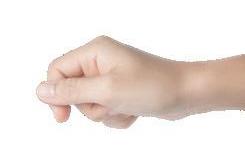
5 minute read
Horses for courses
Maintaining an appropriate body weight is important to equine health and nutrition. It can help minimise the risk of serious conditions and assist with overall health.
Excess body condition and obesity are common in certain breeds and can increase the chance of developing hormonal imbalances, leading to insulin resistance, equine metabolic syndrome and laminitis, as well as causing decreased athleticism. Underweight horses can experience several health problems also, including increased risk of malnutrition and anemia, poor-quality coat and hooves, increased likelihood of infection, fertility issues and musculoskeletal injuries. Early winter is an ideal time of the year to assess body condition in horses and ensure they are in optimum condition before the colder months. Various tools can be used to routinely determine body weight and condition including weigh tapes, scales, body condition score charts and even online calculators or well-focused photographs to evaluate changes. Whichever tool you select, it's important to use it correctly and frequently in order to accurately assess condition over time. This means you can adjust the diet accordingly, to consistently achieve ideal body condition. Body condition scoring serves as both the fastest and more economical method among the many options for measuring body fat. There are two body condition charts used for horses, a 1 – 9 chart commonly used in the USA and Europe and a 0 – 5 chart displayed here that is more common in New Zealand. Both charts are used to describe the amount of fat and muscle a horse is carrying, with either 0 or 1 signifying extreme emaciation and 5 to 9 indicating obesity.
Body Condition Score Chart
How to score your horse:
1. 2. Body Condition Score Chart Evaluate the horse by feeling the neck, back, and ribs from side on, and visually assess the rump from behind; Select a base score for the rump, with half scores for intermediate grades; 3. If the back and ribs or neck score differs by 1 point from the rump score adjust by half a point up or down.
How to score your horse:
Areas of emphasis for body scoring: thickening of the neck, fat covering the withers, fat deposits along the backbone, fat deposits on the flanks, fat deposits on the inner thighs, fat deposits around tailhead, fat deposits behind shoulders, fat covering ribs, shoulder blends into neck.
0 Very Poor
• Very sunken rump 0 Very Poor • Very sunken rump • Deep cavity under tail • Skin tight over bones • •Deep cavity under tailVery promiment • Skin tight over bonesbackbone and pelvis • •Very prominent backbone and pelvisMarked ewe neck • Marked ewe neck
1 Poor
1 Poor • Sunken rump • Cavity under tail • Sunken rump • Cavity under tail • •Ribs easily visibleRibs easily visible • • •Prominent backbone and croup Ewe neck Promiment backbone and croup • Ewe neck
2 Moderate
1. 2. Evaluate the horse by feeling the neck, back and ribs from side on, and visually assess the rump from behind; Select a base score for the rump, with half scores for intermediate grades; 3 Good 3. If the back and ribs or neck score differs by 1 point from the rump score adjust by half a point up or down. • Rounded rump 3 Good • Rounded rump • Firm neck, no crest except for stallions • • Firm neck, no crest except No gutter along back • • • stallions No gutter along back Ribs just covered but easily felt Ribs just covered but easily felt
4 Fat
4 Fat • Well-rounded rump • • • • Well-rounded rump Gutter along back and rump Ribs and pelvis hard to feel Gutter along back and rump • • Slight crestRibs and pelvis hard to feel • Slight crest
5 Very Fat
• Flat rump both sides of the backbone 2 Moderate • Very bulging rump • Deep gutter along back and rump5 Very Fat • •Ribs just visibleFlat rump both sides • • Ribs and pelvis buried Very bulging rump • • • Narrow but firm neck Backbone well covered of the backbone Ribs just visible • • • Marked crest Folds and lumps of fat Deep gutter along back and rump • Narrow but firm neck • Ribs and pelvis buried • Areas of emphasis for body condition scoring: Backbone well covered thickening of the neck, fat covering the withers, fat deposits along backbone, fat deposits on flanks, fat • Masked crest deposits on inner thighs, fat deposits around tailhead, fat deposits behind shoulders, fat covering ribs, shoulder blends into neck. • Folds and lumps of fat Version 0920 1800 772 198 | advice@ker.com | ker.com
Body condition scoring takes time and practice and involves feeling areas of the horse with the fingers or hands, as well as visual assessment. Due to conformational differences, it is often recommended to body condition score the horse in three sections; neck, barrel and rump, taking the average of these sections to achieve an accurate score. Assessing weight changes and altering diets accordingly can be challenging for various reasons, including a lack of knowledge regarding appropriate body weight or condition, conformational differences and the appearance of weight changes based on breed and higher calorie diets — due to widespread availability of quality feed and forage year-round. Depending on their discipline and use, horses will have different optimum body condition scores. For example, using the 0 – 5 chart, horses used for endurance, eventing, polo and racing should score 2.5 to 3. Hunters, jumpers, dressage mounts, broodmares and stallions in the off season should score 3.5 to 4.
Because each horse is an individual with regards to metabolism, workload and temperament, owners should consult a veterinarian or an equine nutritionist to evaluate their horses and recommend suitable feeding plans. Keeping a horse at its optimum body condition can decrease its risk of developing various diseases related to feed management, as well as helping to ensure the horse can perform the work that is required.
For further advice on body condition scoring and selecting the correct diet for your horse, consult a credible equine nutritionist.
Article supplied by Luisa Wood, Equine Nutritionist



















